 Environmental Law Enforcement
Environmental Law Enforcement
The Environmental Management Administration (EMA) is primarily responsible for planning, promoting, and implementing key environmental pollution control programs and digital environmental law enforcement.
Promoting alliances between prosecutors, police, and environmental authorities: interdisciplinary cooperation on law enforcement, jointly safeguarding the nationSince 2011, the EMA has established a collaboration mechanism between prosecutors, police, and environmental authorities, combining environmental protection, prosecution, police, and tax authorities to combat environmental crime. In 2019, the EMA initiated the Golden Environment Awards Ceremony to recognize and commend frontline law enforcement personnel. To enhance their expertise and efficiency in tackling environmental crimes, the EMA has also integrated technological tools for investigation and convenes consultation meetings on environmental crime investigations and environmental law enforcement workshops, inviting prosecutors, police officials, environmental engineers, and other experts for consultations, case-sharing, and experience exchange. This alliance enhances the capacity for addressing environmental crimes through interdisciplinary cooperation, allowing for the joint safeguarding of the nation.
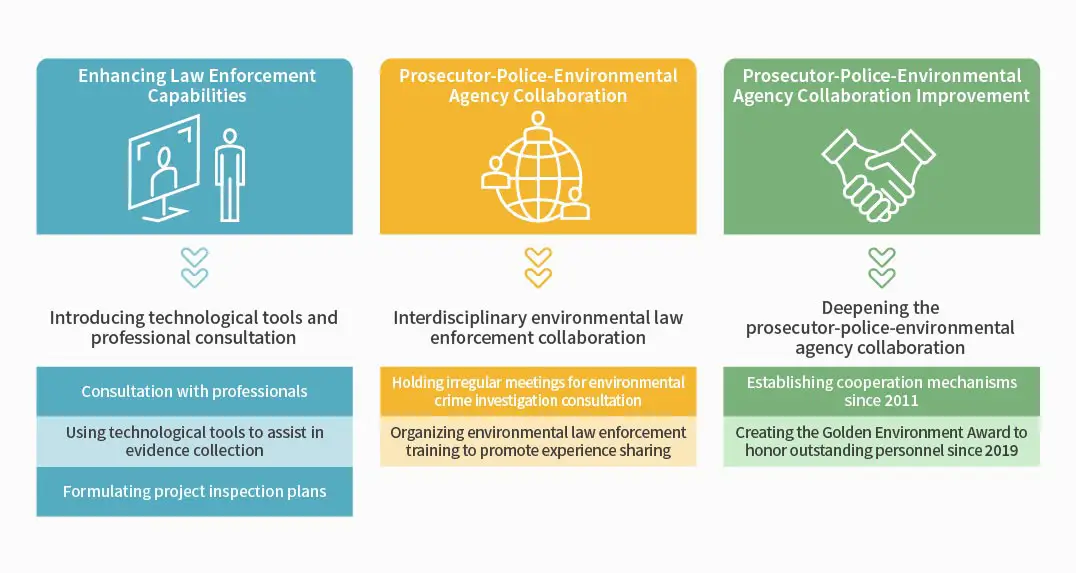
The smart fence system is designed to prevent pollution and monitor air, water, and waste pollution in real-time. The EMA works with local governments to form a collaborative network installing remote monitoring equipment and sensors at hotspots based on the type of site and pollution. Through the building of IoT infrastructure and AI-based analytical modules, the system provides real-time alerts for anomalies and reports them to inspecting units, preventing pollution discharge and illegal waste disposal by unscrupulous entities.
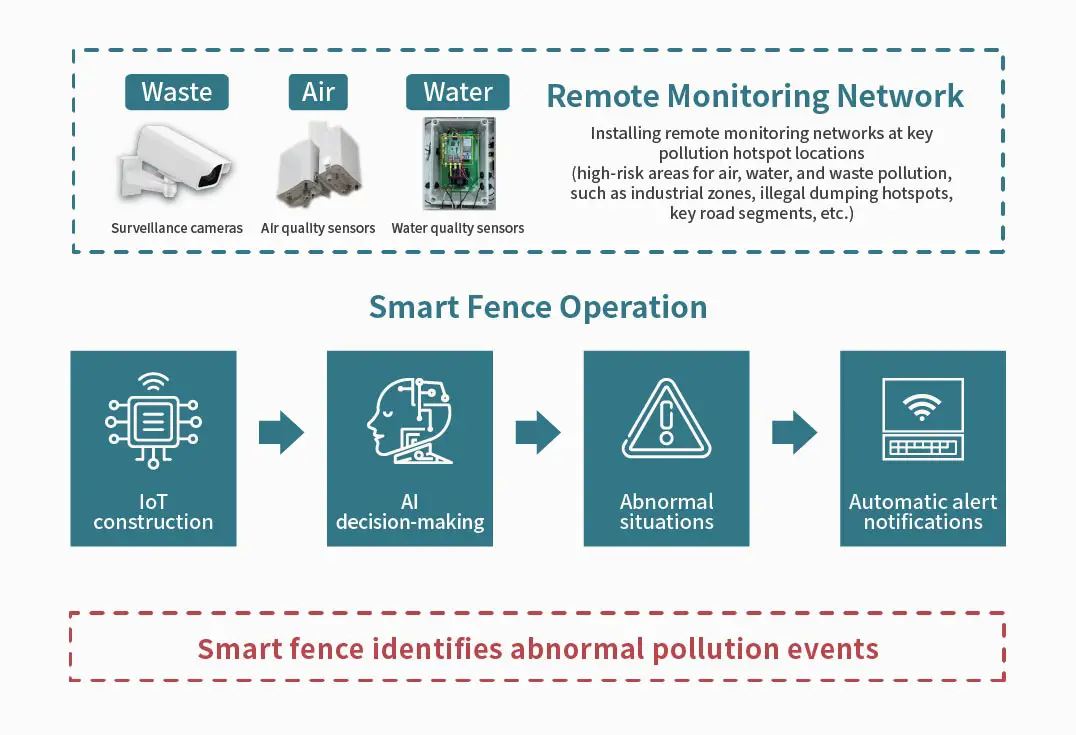
To improve the efficiency and accuracy of environmental law enforcement, the EMA has adopted digital inspecting methods. An "The Inspection Management Platform" is developed to integrate data from 20 permit and reporting systems within and beyond the Ministry of Environment. Through transforming data science analysis and supervisory experience into "system logic," the platform identifies potential pollution sources for targeted inspecting and intervention. Smart tablets are also deployed for onsite inspecting, marking a transition to an era of digital auditing.
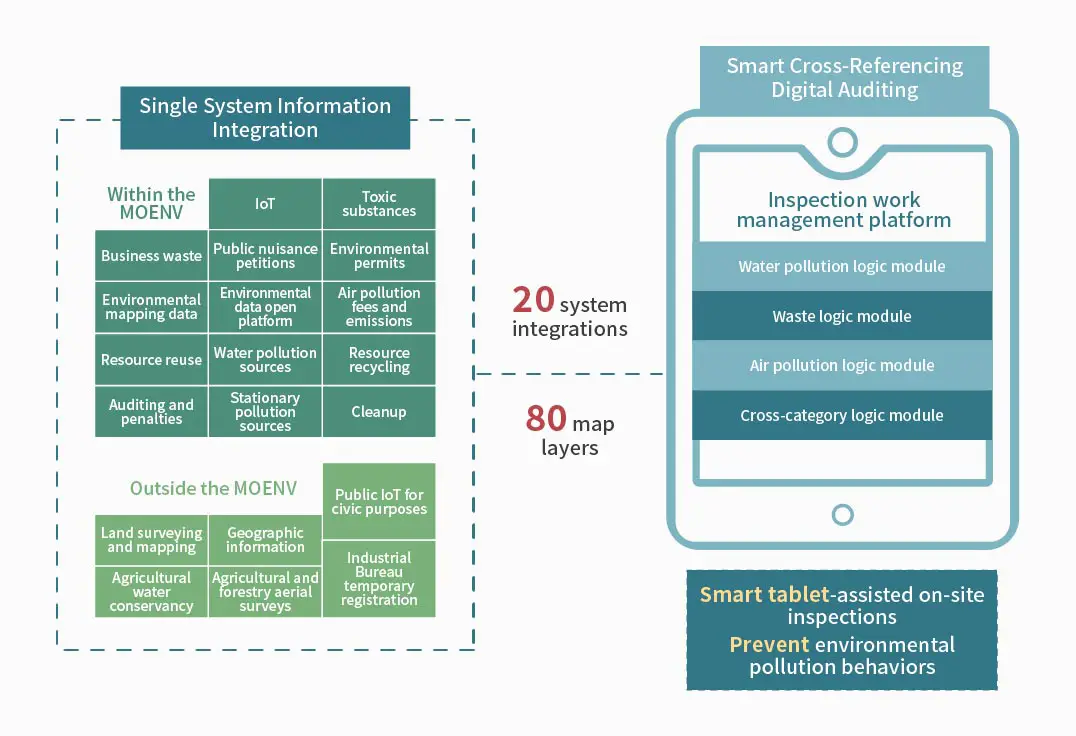
Environmental impact assessment (EIA) requires developers to evaluate the scope and extent of environmental impacts while planning projects. Developers must publicly disclose a comprehensive environmental management plan. Competent authorities must diligently oversee, verify, and track developers' subsequent works to ensure adherence to items specified in plans or evaluations. If there is non-compliance, authorities can require developers to make improvements or propose solutions within a given timeframe to adhere to EIA commitments, fostering sustainable environmental and economic development.
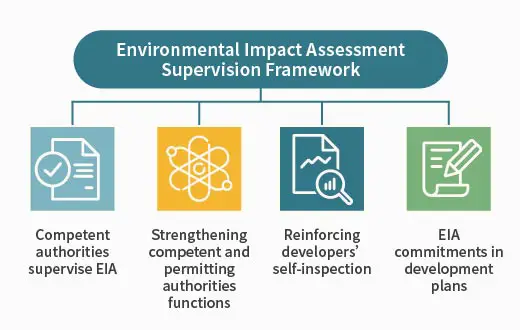
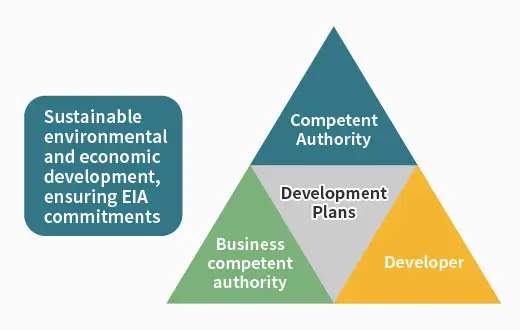
To protect environmental quality and enhance public service efficiency, the EMA established the "Public Nuisance Petition System" in 1993, providing seven ways for citizens to file complaints: a telephone hotline, online platform, the Pollution Report app, in-person visits, written submissions, email, and fax. The system integrates public nuisance petition workflows across local environmental agencies nationwide, allowing relevant environmental authorities to quickly pinpoint pollution locations and address incidents promptly, preventing further contamination.
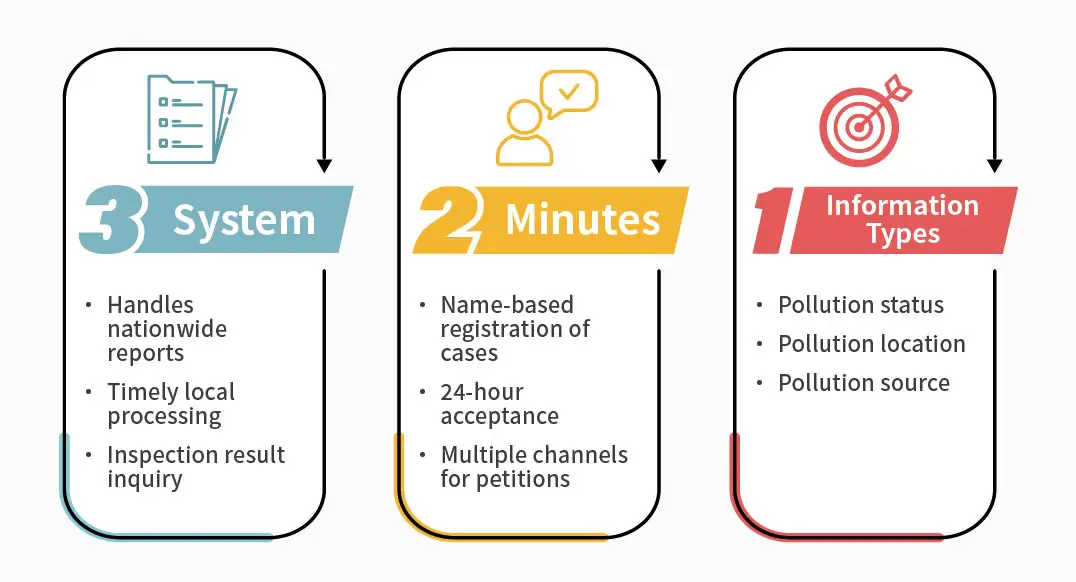
Environmental engineers play a vital role in environmental protection within the context of national infrastructure building and social development. To ensure the quality and prevent deficiencies in environmental engineer certification processes, the EMA reinforces engineer certification inspections in three aspects: "technology," "expertise," and "execution." This enhances the quality of environmental engineer certifications in Taiwan and better prevents environmental pollution.
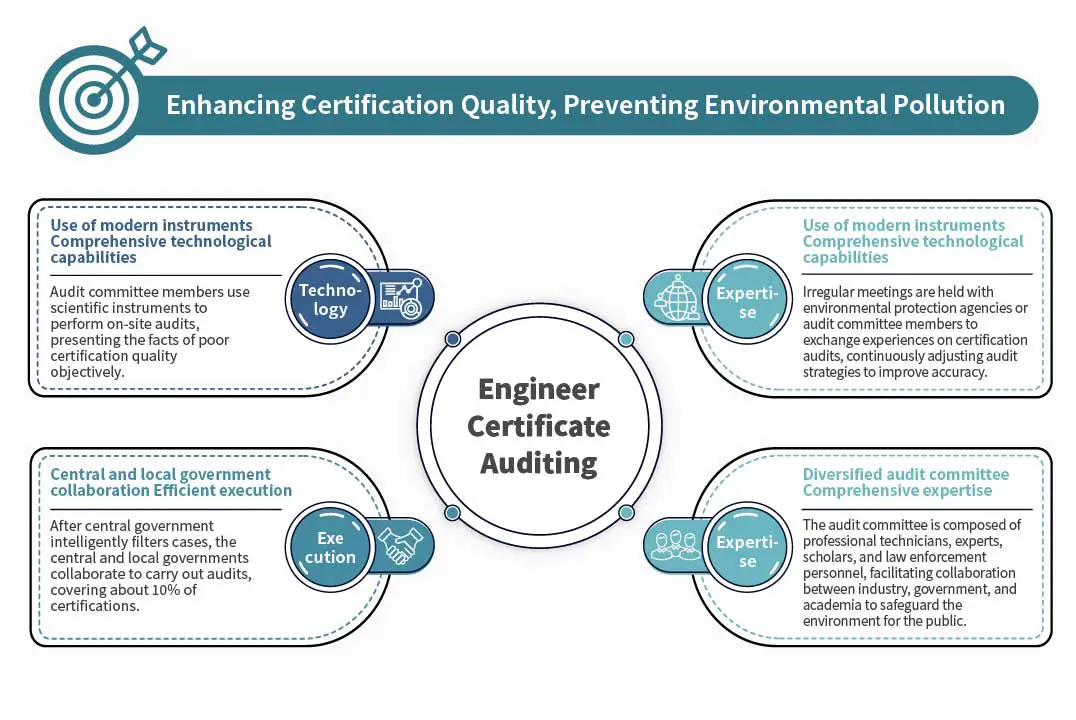
The EMA has implemented various strategies and measures to strengthen environmental inspecting, from establishing the inter-disciplinary alliance between prosecutors, police, and environmental authorities, promoting digitalized inspecting and developing smart monitoring systems, to EIA supervision, providing multiple channels for public nuisance petition cases, and strengthening environmental engineer certification inspection. Each measure is aimed at effectively managing and preventing environmental pollution issues.
One of the most significant advancements is the shift from traditional on-site inspecting to the adoption of technological law enforcement, combined with establishing the inter-disciplinary alliance between prosecutors, police, and environmental authorities. These methods effectively deal with illegal activities, thus protecting the nation and leaving a better environment for future generations.
- Data Source: Division of Environmental Enforcement
- Publish Date: 2024-08-27
- Update Date: 2025-11-03





